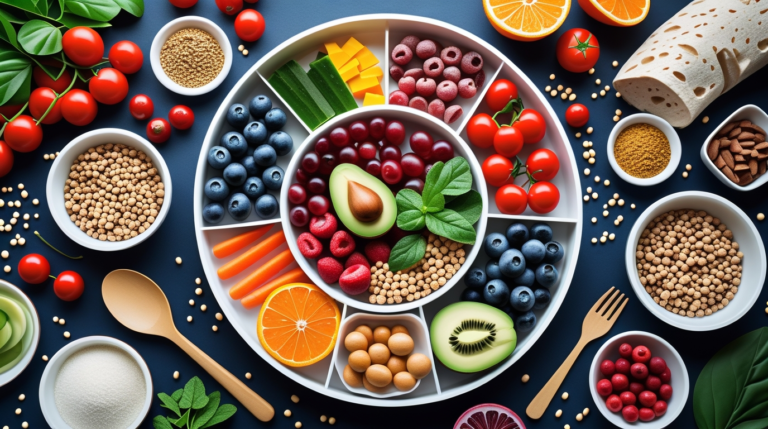Controlling blood sugar naturally is a crucial aspect of maintaining a healthy lifestyle, especially for those living with diabetes or pre-diabetes. By understanding how to manage blood sugar levels through diet and lifestyle, you can live healthier and feel better every day.
Understanding the Importance of Controlling Blood Sugar Naturally
Learning how to control blood sugar naturally is essential for overall health. Not only does it help in managing or preventing diabetes, but it also plays a significant role in reducing the risk of heart disease, improving energy levels, and maintaining a healthy weight. This guide will walk you through some practical dietary tips and lifestyle changes to help keep your blood sugar levels stable and support your long-term health.
Why Focus on Natural Methods?
Natural methods for controlling blood sugar are increasingly popular due to their sustainability and minimal side effects. Natural strategies often lead to a healthier lifestyle overall, benefiting not just blood sugar levels but also weight management, heart health, and mental well-being. Let’s dive into how you can incorporate these methods into your daily routine.
Best Diet for Blood Sugar Control
Low Glycemic Index Foods
Eating low glycemic index (GI) foods is vital for blood sugar management. These foods are digested slowly, leading to a gradual rise in blood sugar levels. Low GI foods include:
- Whole grains like barley, quinoa, and oats.
- Legumes such as lentils, chickpeas, and beans.
- Non-starchy vegetables like spinach, broccoli, and cauliflower.
Incorporate these foods into your meals regularly to maintain steady blood sugar levels. Consider exploring our post on “Healthy Whole Grains for a Balanced Diet” for more ideas.
High-Fiber Diet
A diet rich in fiber plays a crucial role in controlling blood sugar. Fiber slows the absorption of sugar, which helps prevent spikes in blood glucose levels. Key fiber sources include:
- Fruits such as apples, berries, and oranges.
- Vegetables including Brussels sprouts, carrots, and squash.
- Whole grain products and bran.
Consider trying our recipes from the “Fiber-Rich Recipe Collection” to add more variety to your meals.
Balancing Protein and Healthy Fats
Proteins and healthy fats help slow down carbohydrate absorption and maintain steady blood sugar levels. Include the following:
- Lean meats like chicken and turkey.
- Fish high in omega-3s, such as salmon and mackerel.
- Nuts, seeds, and avocados for healthy fats.
Enhance your understanding of dietary fats by exploring our article on “The Role of Healthy Fats in Your Diet”.
Practical Lifestyle Tips for Blood Sugar Management
Regular Physical Activity
Engaging in regular physical activity is a cornerstone of effective blood sugar management. Exercise helps improve insulin sensitivity and lower blood sugar levels. Aim for activities such as:
- Walking or light jogging.
- Cycling or swimming.
- Strength training and yoga.
Combining different types of exercises can optimize your health benefits, so mix it up to keep things interesting.
Consistent Meal Timing
Eating meals at regular intervals can prevent large fluctuations in blood sugar. Aim for balanced meals every 4-5 hours and consider small snacks if needed.
Consistent meal timing helps reinforce your body’s natural rhythm and improves energy levels throughout the day.
Mindful Eating Practices
Mindful eating involves paying attention to the food you eat and its effects on your body. Practices include:
- Chewing food slowly and thoroughly.
- Appreciating flavors and textures.
- Recognizing hunger and fullness signals.
These techniques can prevent overeating and improve digestion, playing a part in more stable blood sugar levels. Check out more tips on “Mindful Eating for Better Health”.
Monitoring Your Progress
Tracking Blood Sugar Levels
Regularly monitoring blood sugar levels can guide your diet and lifestyle decisions, making it easier to identify what works best for you. Use a reliable glucometer and track your results.
Adapting Diet and Lifestyle Changes
To successfully control blood sugar naturally, be open to adapting your strategies as needed. What works for one person might not be as effective for another—so listen to your body and adjust accordingly.
Conclusion: Embrace a Healthier Lifestyle
Controlling blood sugar naturally through diet and lifestyle changes offers numerous benefits that go beyond diabetes management. By focusing on a balanced diet rich in low GI foods, fiber, and healthy fats, alongside regular physical activity and mindful eating practices, you can enhance your overall health and well-being.
Remember, every small step counts in building a healthier lifestyle. We’d love to hear your thoughts and experiences—share your journey with us in the comments below. If you found this guide helpful, consider sharing it with friends or subscribing for more insights. Let’s embark on this journey to better health together!





Leave a Comment